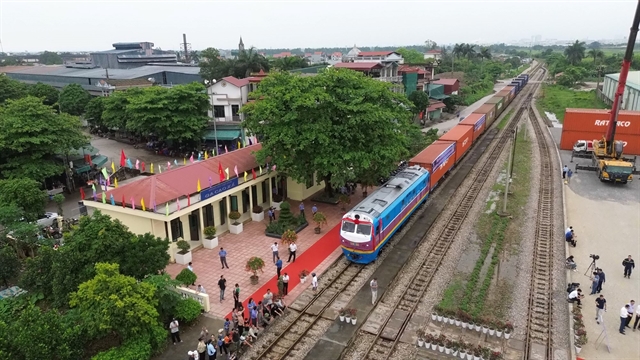Efforts are being ramped up to fast-track three railway projects linking Vietnam and China, with the aim of making them symbolic project in bilateral cooperation, according to the Ministry of Construction.

HÀ NỘI — Efforts are being ramped up to fast-track three railway projects linking Việt Nam and China, with the aim of making them symbolic project in bilateral cooperation, according to the Ministry of Construction.
Joint commitment to speed up implementation
Among the three planned routes, the Lào Cai–Hà Nội–Hải Phòng–Quảng Ninh railway project is set to be the first to break ground.
Following the National Assembly’s adoption of Resolution No. 187 on the investment policy, Minister of Construction Trần Hồng Minh met with Chinese Minister of Transport Liu Wei in late March to discuss implementation plans. Both sides agreed to expedite preparations to commence construction by the end of 2025.
The Ministry of Construction has asked the Chinese side to swiftly approve and issue a diplomatic note on non-refundable aid for the project's feasibility study.
It also proposed China designate a focal agency to negotiate a framework agreement for a government loan, and recommend capable enterprises to form joint ventures to participate in the project.
Domestically, the ministry is finalising a draft government resolution on the implementation of the National Assembly’s investment policy and coordinating with relevant ministries to prepare guiding decrees on special mechanisms and policies for the project.
Work is also underway to develop common criteria, regulations, technological standards, and designs to facilitate the mobilisation of capital and selection of contractors. Additional stations and branch lines are being considered to maximise economic development benefits for localities along the route.
For the Hà Nội–Lạng Sơn line, the ministry plans to construct a new double-track railway to meet projected demand by 2050, including nine million tonnes of freight and 7.5 million passengers per year.
As for the Hải Phòng–Hạ Long–Móng Cái route, the ministry has determined the project’s scale and route direction to enhance connectivity among northern coastal provinces and support international rail transit. Việt Nam is calling on China to accelerate the approval process for a technical assistance project supporting the planning of these two railways.
Opportunities for growth and regional integration
Deputy Minister of Construction Nguyễn Danh Huy noted that the three cross-border railway projects are expected to enhance bilateral trade, connect Việt Nam to China’s extensive rail network reaching Central Asia and Europe, and link China to ASEAN via Việt Nam.
According to Trần Thiên Cảnh, director of the Vietnam Railway Authority, the investment in these railways will help restructure the transport sector and improve traffic safety.
To prepare for the Lào Cai–Hà Nội–Hải Phòng–Quảng Ninh project, the ministry has asked the People’s Committees of nine affected provinces and cities to carry out land clearance, compensation, and resettlement, with the construction of resettlement areas expected to begin in 2025. Meanwhile, domestic enterprises are strengthening their capacity to serve both this project and the North–South high-speed railway.
For the Hà Nội–Lạng Sơn and Hải Phòng–Hạ Long–Móng Cái routes, detailed planning will soon commence to determine the routes' directions, technical standards, and investment plans. Construction is anticipated to begin after 2030, following approval of the planning phase. — VNS





